Mac Pro vs iMac Pro: which pro Mac is best for you?
Apple's own Clash of the Titans
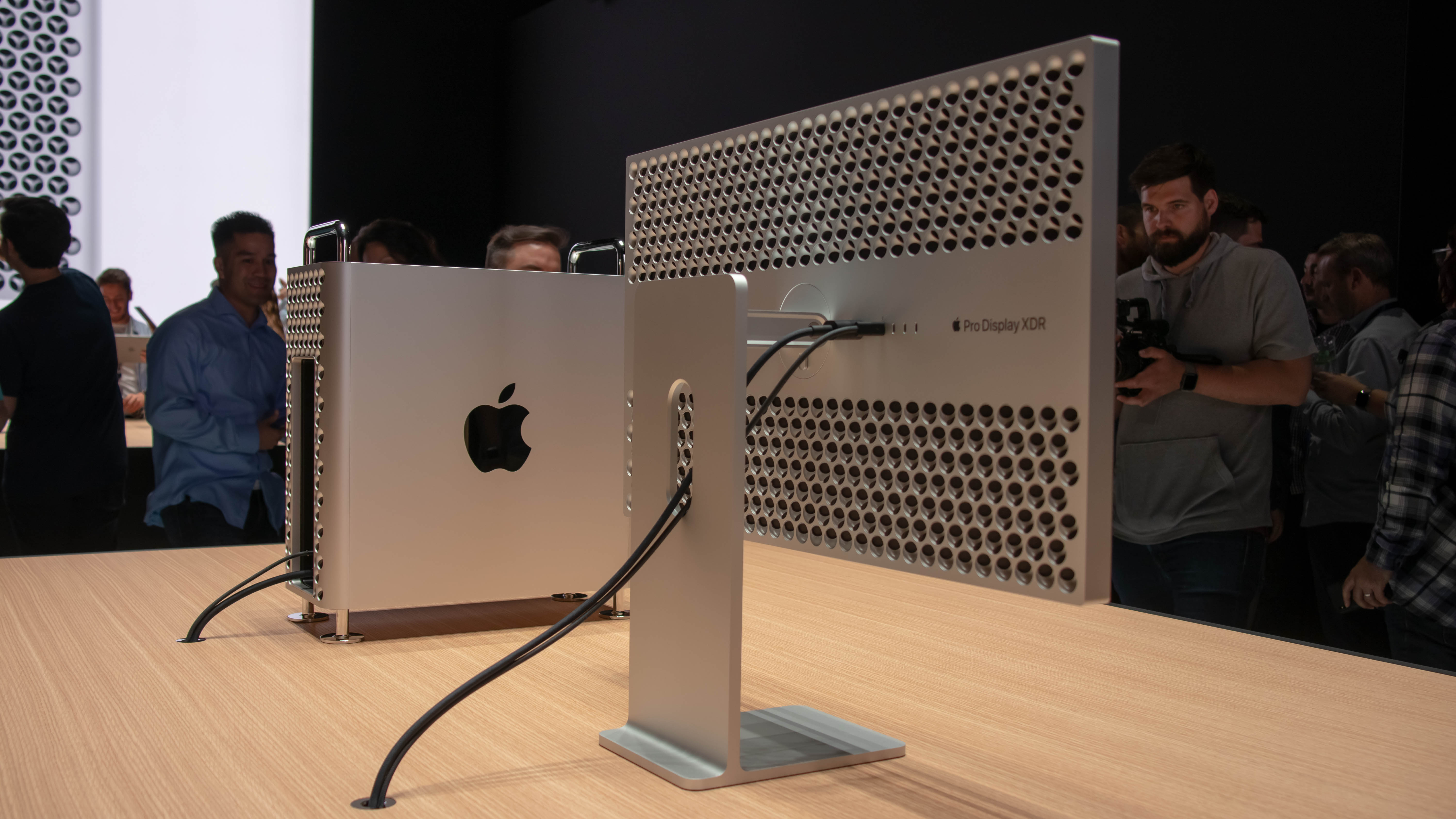
After years of waiting, Apple has finally announced a new Mac Pro at WWDC 2019, packed with Intel Xeon processors and up to 1.5TB of system memory. It’s a system designed specifically for the creatives and professionals out there, but it’s not the only Mac out there for that. The 2017 iMac Pro also packs high-end desktop hardware, but because of its form factor isn’t quite as upgradeable or powerful.
So, which is the right system for you? Do you want the compact all-in-one design of the iMac Pro, with its built-in 5K Retina display? Or, do you want to go for the Mac Pro, with its modular design that will keep the hardware up to date for years to come? It’s a difficult decision, but luckily we here at TechRadar have used our tech expertise to help you find the best Mac for your professional needs.
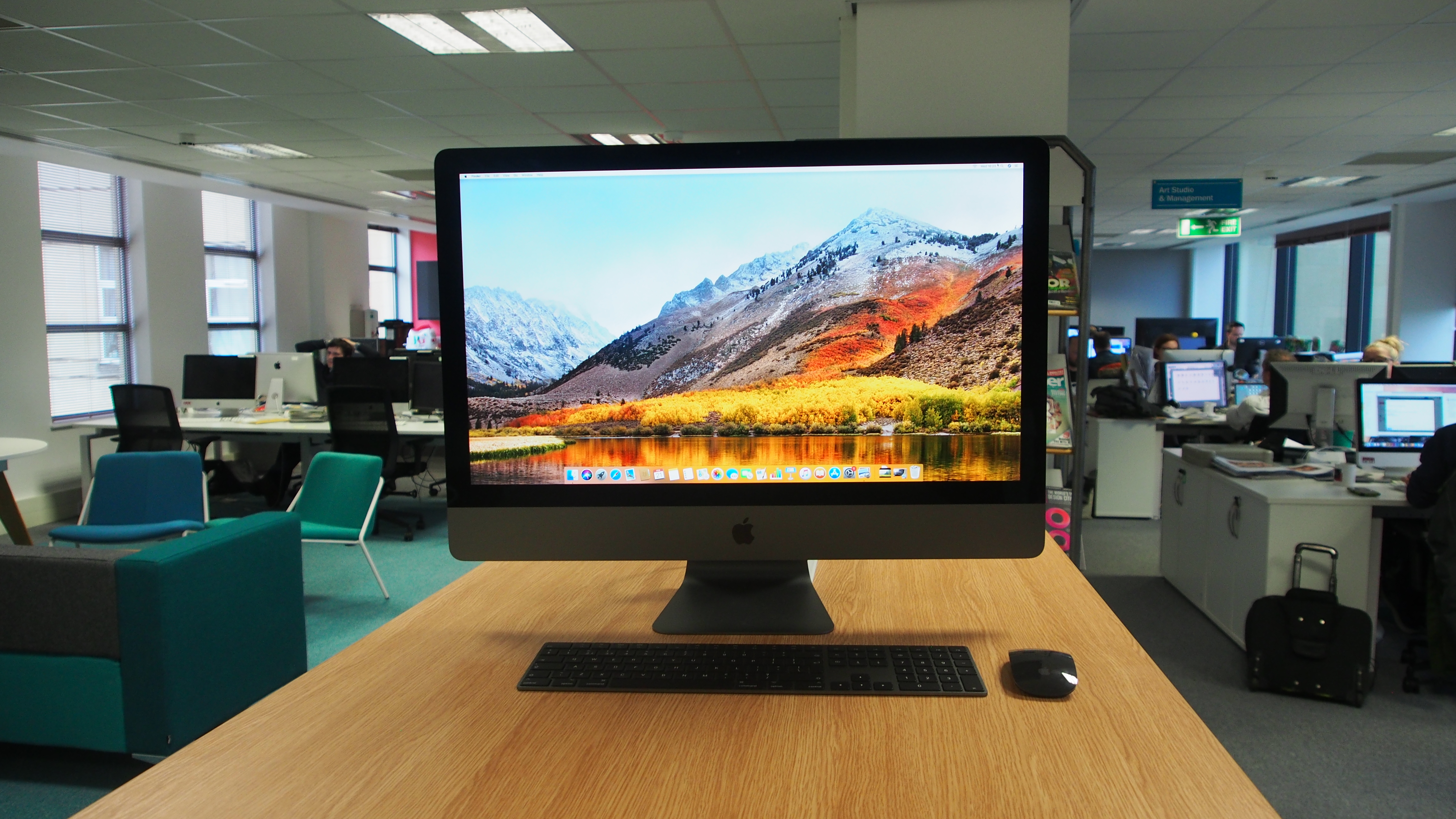
Mac Pro vs iMac Pro: price
Both the Mac Pro and the iMac Pro are expensive devices. The iMac Pro, as old as it is, will still set you back at least $4,999 (£4,899, AU$7,299) for the base model. You can upgrade it all the way up to $15,699 (£14,529, AU$24,419) with an 18-core Intel Xeon-W processor, 256GB of RAM and a 4TB SSD, too, in order to really take it to the next level.
The new Mac Pro is more expensive to start, though, and will set you back at least $5,999 (about £4,730, AU$8,720) for more powerful hardware in an upgradeable chassis. And, while we can’t play around and see how expensive it will get at the top end, we do know that it will come with up to a 28-core Intel Xeon processor, 1.5TB of RAM and a 4TB SSD, so it will definitely be more expensive to max out.
These are both extremely powerful and expensive systems, but the iMac Pro might mark the better value, as it will include a display and peripherals out of the box. However, on the flip side, you’ll be able to upgrade the Mac Pro later on down the line, which should save a ton of cash in the future, as you won’t need to buy an entirely new system to keep up-to-date hardware.
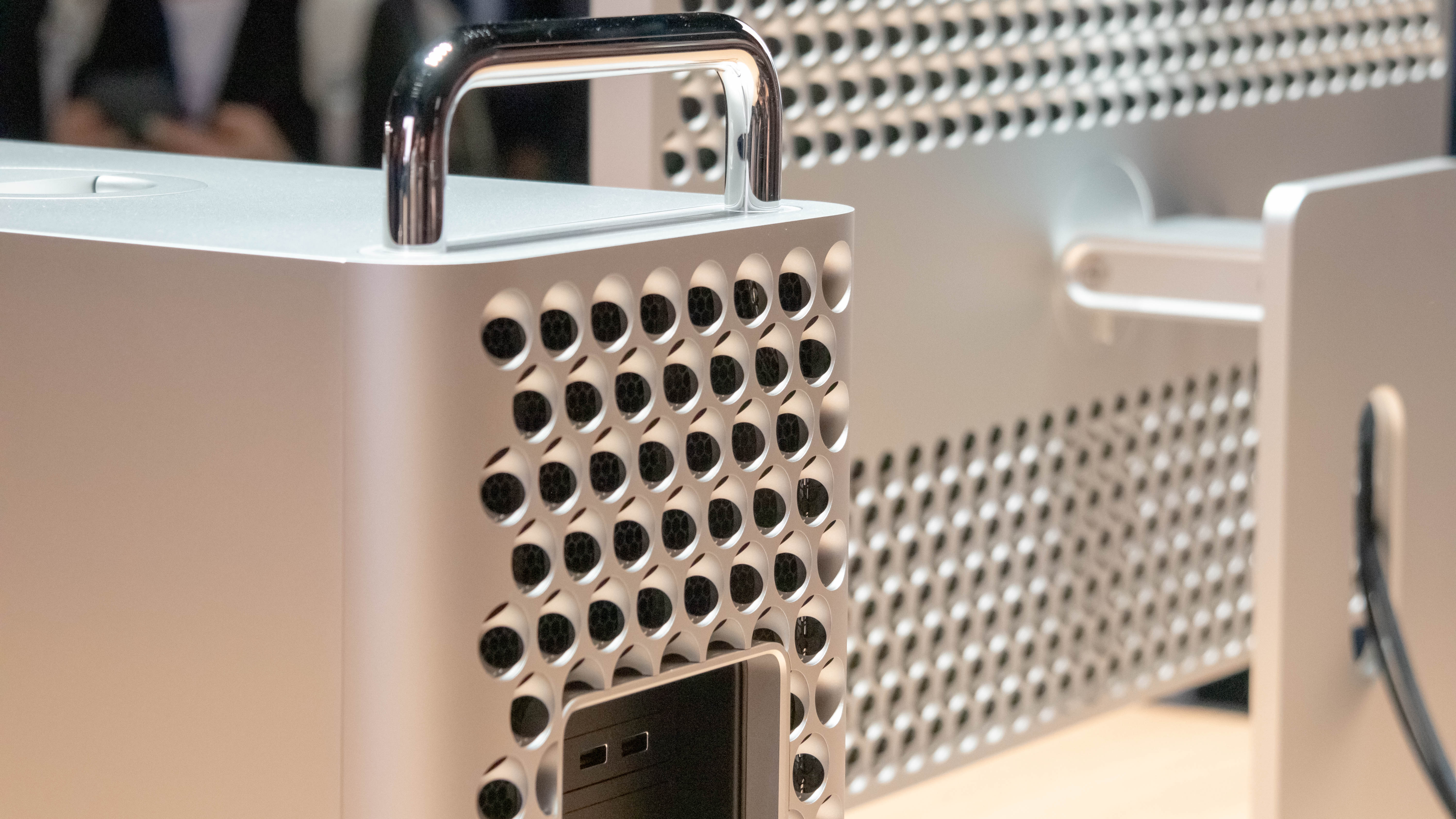
Mac Pro vs iMac Pro: design
Now, obviously, we haven’t had the chance to get the Mac Pro in our office for a full review, but our first impressions are that it looks remarkably like a cheese grater. Its aluminum chassis likely looks a lot better in person, and the ability to easily open it up in one smooth option means that the practicality of the design goes a long way.
On the other hand, the iMac Pro is a much more elegant device. It takes the tried and true design of the iMac and repurposes it for a professional-level computer. And, obviously, you can’t deny the appeal of having everything built into one ready-to-go package.
Are you a pro? Subscribe to our newsletter
Sign up to the TechRadar Pro newsletter to get all the top news, opinion, features and guidance your business needs to succeed!
But, of course, the level of hardware on offer in the new Mac Pro likely wouldn’t be available in the same slim design of the iMac Pro, so the fact it looks as good as it does is still a selling point. Still, users that are looking for an elegant package to place in their office without a ton of errant wires will find the iMac Pro to be a much more attractive package.
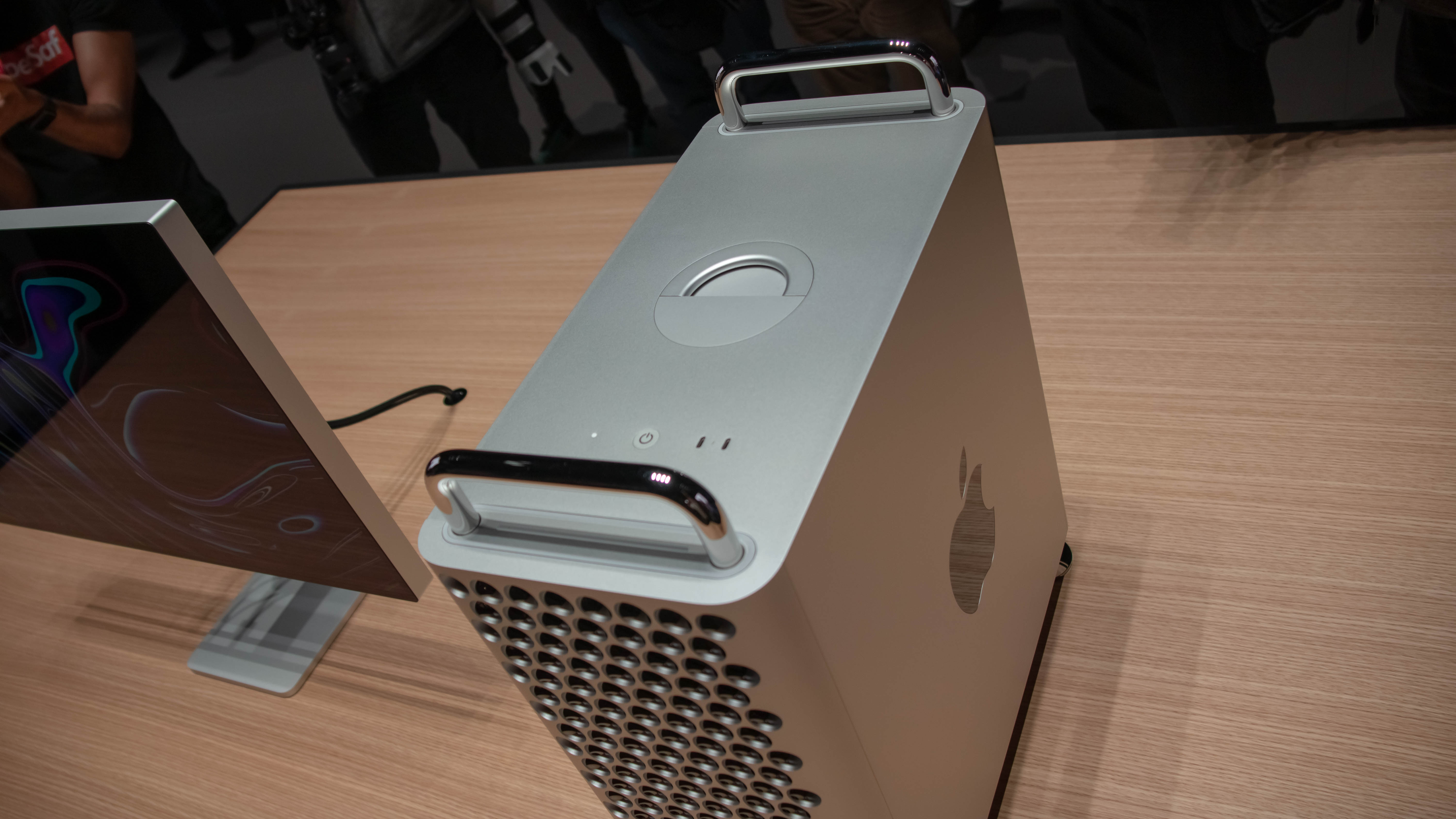
Mac Pro vs iMac Pro: specs
The Mac Pro isn’t just newer than the iMac Pro, but it packs much more power, in an admittedly larger package. This beefy desktop packs up to a 28-core, 56-thread processor with a 4.4GHz turbo boost, 1.5TB of ECC RAM and a 4TB SSD. With this level of hardware, pretty much any task is going to be a breeze, especially when you factor in the option AMD Radeon Pro Vega II graphics with 32GB of HBM2 VRAM.
And, when compared to the iMac Pro’s 18-core Xeon processor, 256GB of RAM and 4TB SSD, it looks like these two machines exist in different worlds altogether, even if the iMac Pro is still decidedly a powerful system.
The iMac Pro definitely balances this by including a 5K Retina display out of the box, that covers the DCI-P3 color gamut. If you want this kind of display experience with the Mac Pro, you’re going to have to shell out an extra $4,999 (about £3,950, AU$7,270) for the Apple Pro Display XDR – though that does come with a better 6K resolution and impressive XDR tech. Dropping an extra five grand on a display when you’re already spending at least $5,999 (about £4,730, AU$8.720) on the Mac Pro is a hard pill to swallow, though.
At the end of the day, the massive boost in power that the Mac Pro offers probably won’t mean that much to everyday computing users. However, there are creatives and professionals out there that are always in need of more compute performance. And, to these people the time that the Mac Pro will save in rendering projects will be invaluable, and the huge price tag will easily pay for itself in time.
But, for freelance creatives that need something powerful but don’t have tens of thousands of dollars to spend on a new system, the iMac Pro should be more than good enough. Regardless, the Mac Pro easily wins here.
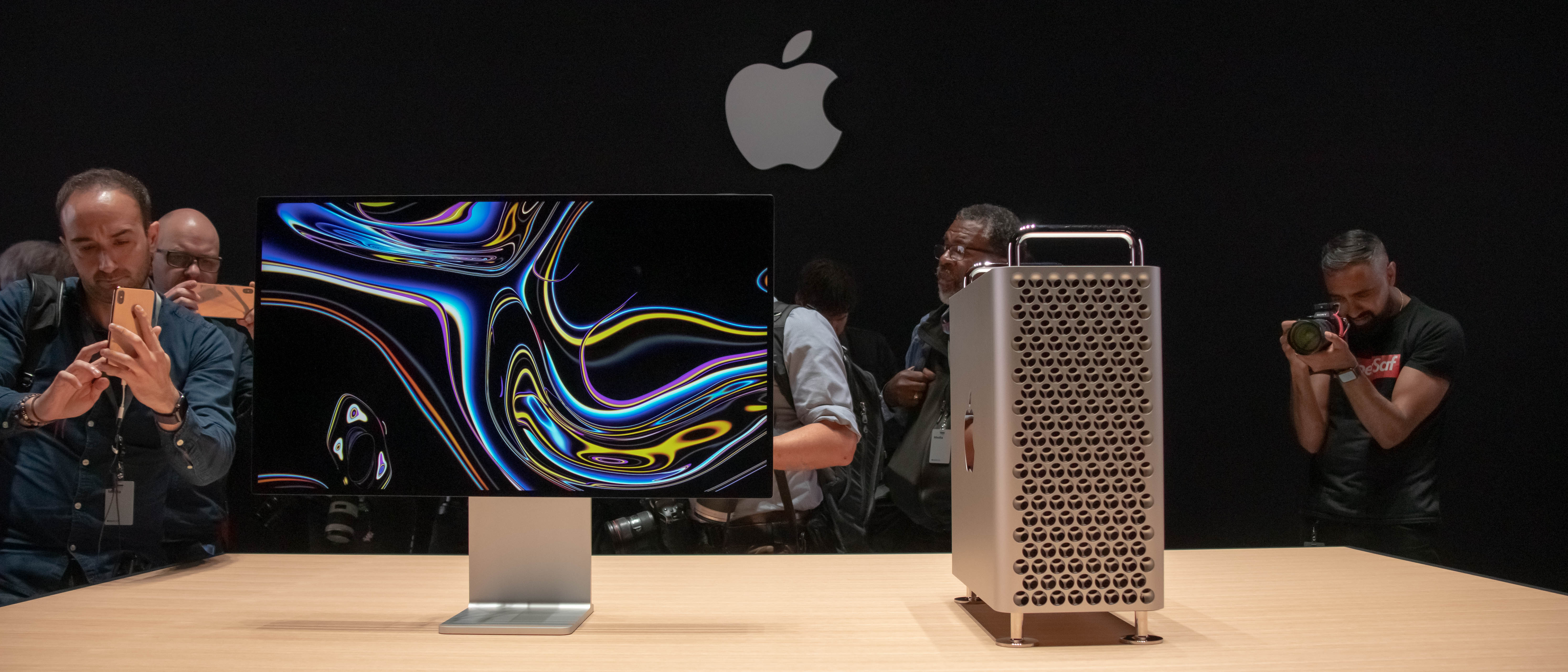
Takeaway: if you need it, you'll know
Both of these Apple systems are incredibly powerful and compelling to the right kind of users. If you’re already invested in Apple’s high-end ecosystem, the upgrade to the Mac Pro might be worth it, especially if you have a lot of high-resolution video and 3D work to get done – it’ll save you time, and time is money.
However, if you’re just looking for a powerful Mac for everyday computing, the iMac Pro may still be your best option, as it’s more than powerful enough for enthusiast video and 3D work, and won’t require external investment in high-end monitors and peripherals.
If you need the Mac Pro, you’re already planning to buy one. It’s way more powerful than the iMac Pro, but the higher price means that anyone that isn’t a professional or creative should probably stay away – even if the modular nature of the Mac Pro makes it more future-proof than the rest of Apple’s lineup. Because, when you’re dropping this much cash on a system, you should expect it to last much longer.
- You'll be able to upgrade the Mac Pro with the best PC components
Images Credit: TechRadar
Bill Thomas (Twitter) is TechRadar's computing editor. They are fat, queer and extremely online. Computers are the devil, but they just happen to be a satanist. If you need to know anything about computing components, PC gaming or the best laptop on the market, don't be afraid to drop them a line on Twitter or through email.
